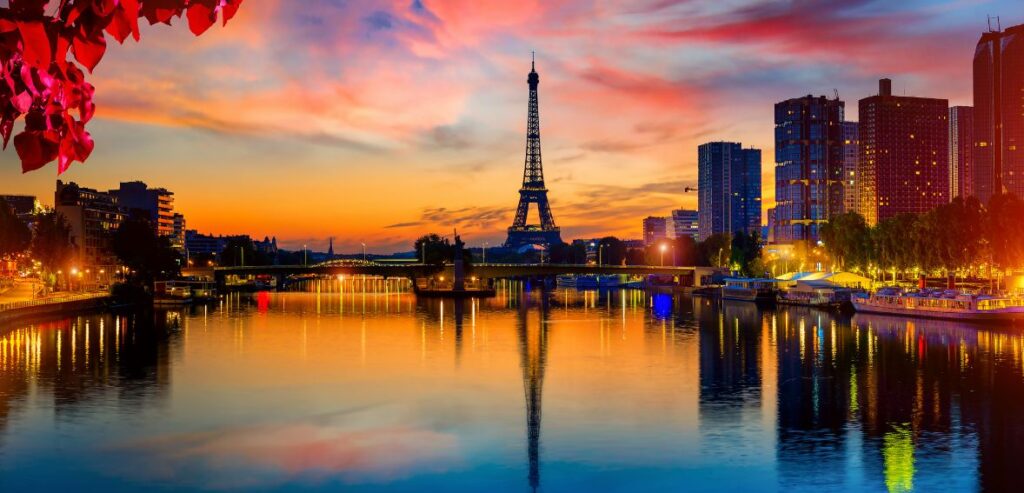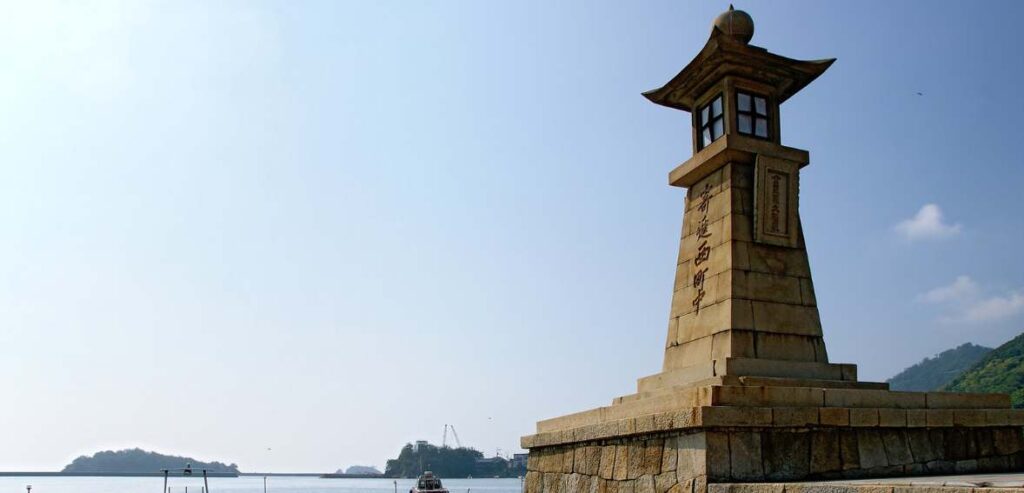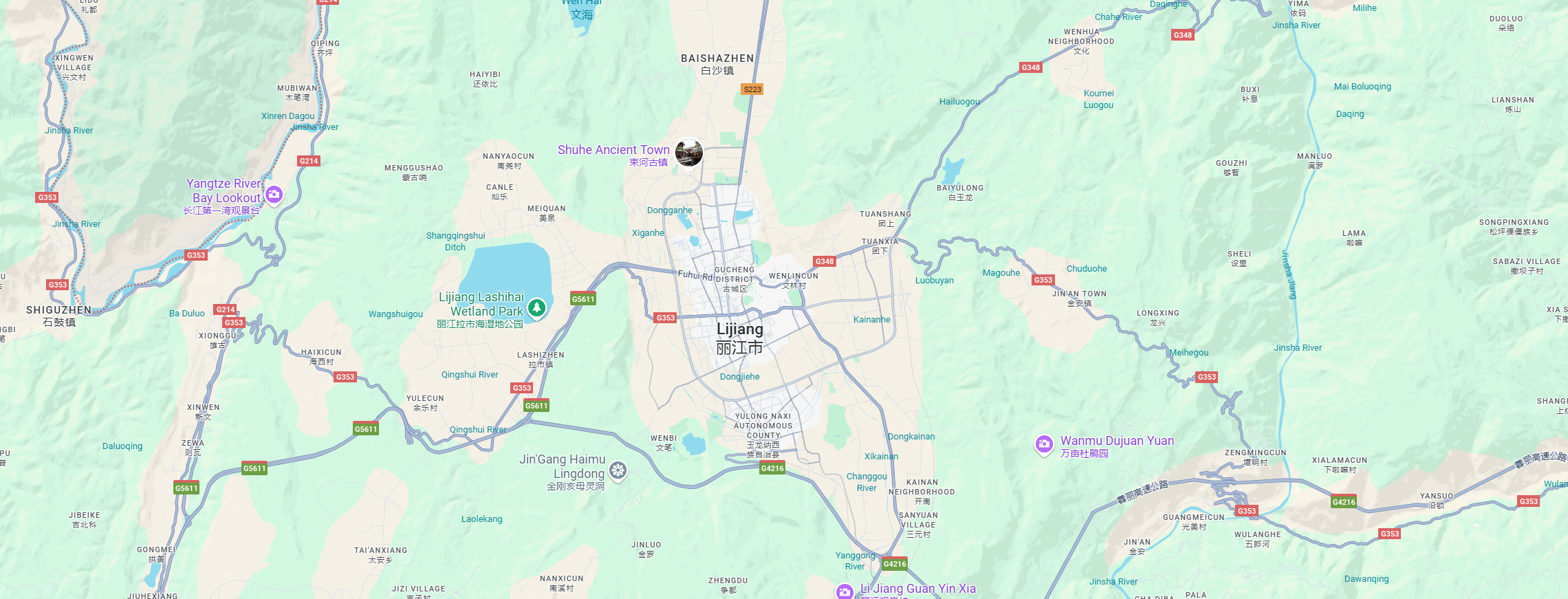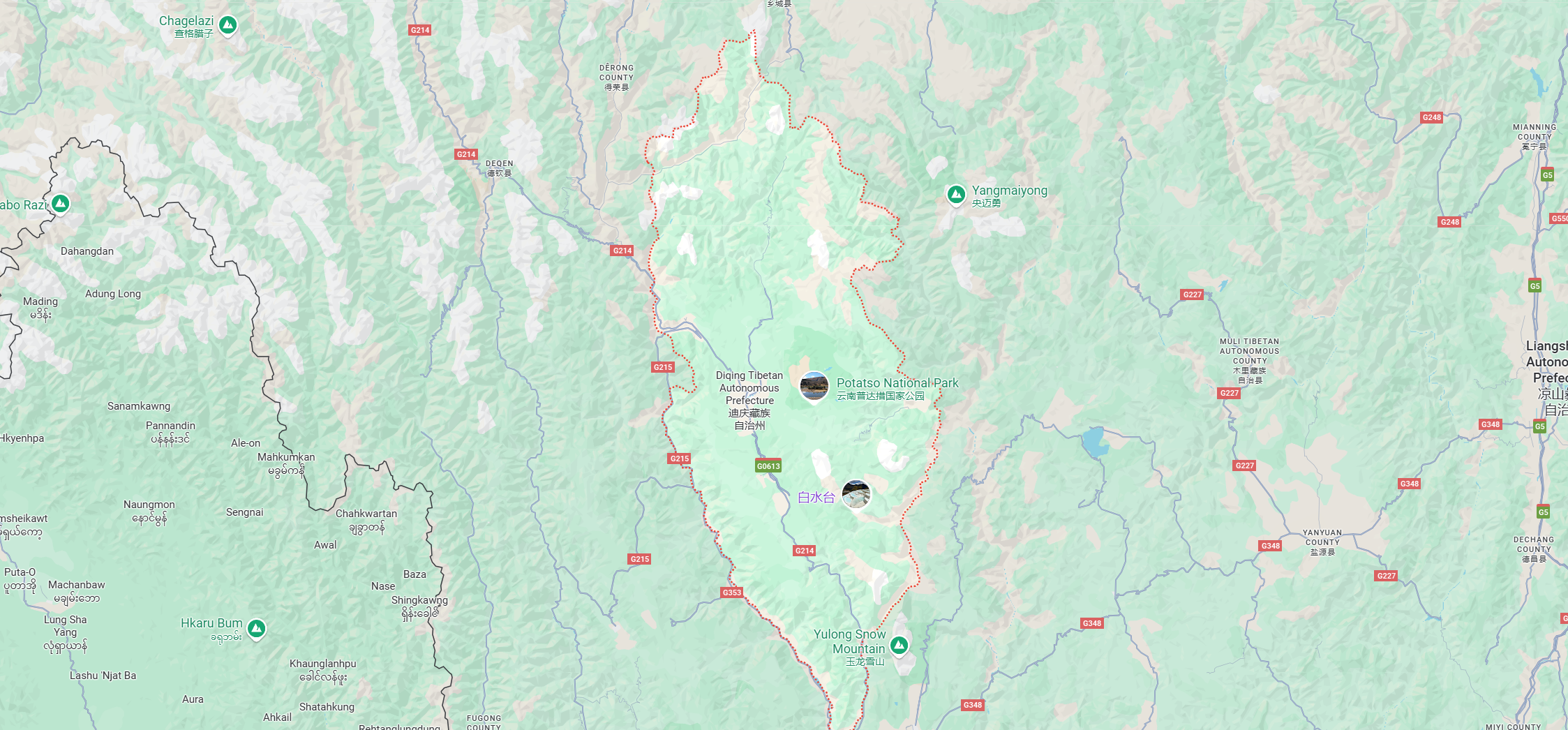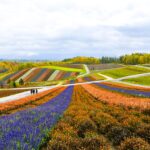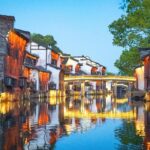Now Reading: A Journey to the Clouds: My 15-Day Yunnan Itinerary Through Kunming, Dali, Lijiang, and Shangri-La
-
01
A Journey to the Clouds: My 15-Day Yunnan Itinerary Through Kunming, Dali, Lijiang, and Shangri-La

A Journey to the Clouds: My 15-Day Yunnan Itinerary Through Kunming, Dali, Lijiang, and Shangri-La
The allure of Yunnan had been whispering to me for years. Tales of ancient towns, snow-capped peaks, and vibrant ethnic cultures painted a picture of a land shrouded in mystique. Finally, the whispers became a siren’s call I could no longer ignore. I embarked on a 15-day solo journey through this southwestern Chinese province, a trip that would not only feast my eyes on breathtaking landscapes but also soothe my soul with its gentle pace of life. This is the story of my adventure, a first-person account of traversing the path from the “City of Eternal Spring” to the mythical Shangri-La.
Day 1-3: Kunming – The Overture of Eternal Spring
My adventure began in Kunming, the capital of Yunnan. Stepping off the plane at Kunming Changshui International Airport (KMG), I was immediately struck by the mild, pleasant air – a welcome respite from the scorching summer elsewhere. They call it the “City of Eternal Spring” for a reason.
My first day was about settling in and getting a feel for the city’s rhythm. I checked into a cozy guesthouse near the Green Lake Park (Cui Hu Park), a vibrant oasis in the heart of the city. In the evening, I joined the locals for a leisurely stroll around the lake, watching elderly couples waltz to traditional music and families flying kites against the twilight sky. It was a picture of serene, everyday life that instantly made me feel at ease.
The next day, I delved into Kunming’s cultural tapestry. My morning was spent at the Yuantong Temple, one of the oldest and largest Buddhist temples in Kunming. The temple’s unique layout, with its main hall situated at the lowest point, and the tranquil sounds of chanting monks created a deeply spiritual atmosphere. In the afternoon, I ventured to the Western Hills, a sprawling forest park overlooking the vast Dianchi Lake. The climb to the Dragon Gate (Longmen) grottoes, carved precariously into the cliff face, was both exhilarating and rewarding, offering panoramic views of the city and the lake below.
No trip to Kunming is complete without a visit to the Stone Forest (Shilin), a UNESCO World Heritage site located about a 90-minute drive from the city. I dedicated my third day to this geological wonder. Walking through the forest of towering limestone pillars, some resembling petrified trees, animals, and even mythical figures, felt like stepping into a fantasy world. I spent hours getting lost in the labyrinthine paths, marveling at nature’s artistry. While it’s a popular tourist spot, I found that venturing off the main paths allowed for moments of quiet contemplation amidst the silent, stone giants.
Official Link: While a single official tourism website for Kunming is not readily available, a good resource for information is the Yunnan Provincial Tourism Administration website (though it may be primarily in Chinese). For practical information on the Stone Forest, I found travel agency sites like China Highlights to be very informative: https://www.chinahighlights.com/kunming/attraction/stone-forest.htm
Kunming: The Gateway to Eternal Spring
History:
Kunming’s history stretches back over 30,000 years, with evidence of prehistoric human activity in the region surrounding Dian Lake. The city truly entered the annals of history with the establishment of the Dian Kingdom around the 3rd century BCE. This enigmatic kingdom, known for its sophisticated bronze work, flourished for centuries before being incorporated into the Han Dynasty in 109 BCE.
For much of its subsequent history, Kunming remained a significant frontier town. During the 8th century, it was a secondary capital of the powerful Nanzhao Kingdom based in Dali. The city’s importance grew during the Yuan Dynasty in the 13th century when it was established as the capital of the newly created Yunnan province, a status it has retained to this day. Its strategic location on the ancient Tea Horse Road and, later, the Burma Road during World War II, cemented its role as a vital hub for trade and cultural exchange in Southwest China.
Approximate Costing of Visiting (as of 2025):
- Stone Forest (Shilin):
- Entrance Fee: Approximately 130 – 175 CNY per person.
- Electric Cart within the park: Around 25 CNY per person.
- Western Hills (Xishan) and Dragon Gate (Longmen):
- Entrance Fee: The park itself is generally free, but attractions within have separate charges.
- Dragon Gate Grottoes: Approximately 40 CNY per person.
- Cable Car (from the base to the grottoes): Around 40 CNY for a single trip.
- A combination ticket for various cableways and attractions can range from 100 – 150 CNY.
- Yuantong Temple:
- Entrance Fee: Approximately 6 CNY per person.
- Green Lake Park (Cui Hu):
- Free admission.
Maps:
A map of Kunming’s key tourist attractions can be found here: https://www.chinadiscovery.com/yunnan/kunming/maps.html
This map will help you visualize the locations of the Stone Forest (a day trip from the city), the Western Hills overlooking Dianchi Lake, and the centrally located Green Lake Park and Yuantong Temple.
Day 4-6: Dali – Where the Mountains Meet the Lake
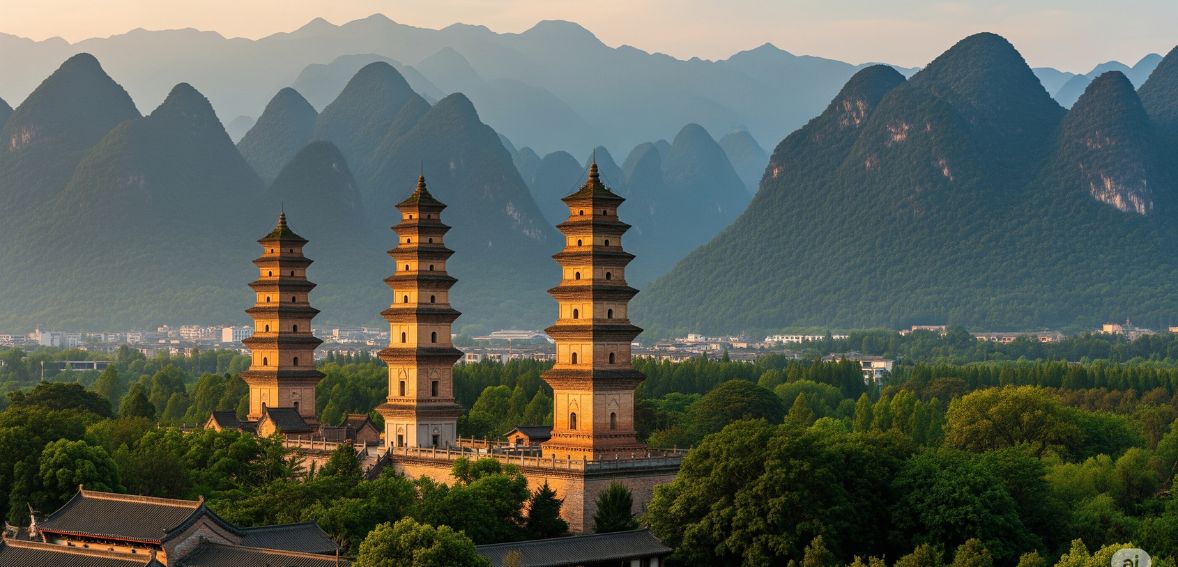
Iconic Three Pagodas of the Chongsheng Temple
From Kunming, I took a high-speed train to Dali, a journey of about two hours that whisked me from a bustling city to a place of profound tranquility. Dali, nestled between the Cangshan Mountains and the vast Erhai Lake, is the heartland of the Bai ethnic minority.
My first evening in Dali was spent wandering through the cobbled streets of the Dali Ancient Town. Unlike some other restored ancient towns in China, Dali’s has a lived-in, authentic feel. I ambled along Fuxing Road, the town’s main artery, Browse the handicraft shops selling intricate silverware and tie-dyed fabrics, a traditional Bai craft. As night fell, the town came alive with the soft glow of lanterns and the sound of live folk music wafting from cozy bars.

Erhai Lake
The next day was dedicated to Erhai Lake. I rented an electric scooter, a popular and convenient way to circumnavigate the lake. The 130-kilometer loop is a journey through idyllic countryside, passing by sleepy Bai villages with their distinctive white-walled houses and intricate paintings. I made a stop at Xizhou, a beautifully preserved Bai town with a bustling morning market and elegant courtyard homes. The highlight of my day was a boat trip to the Nanzhao Folk Island, a small island with temples and stunning views of the lake and the Cangshan Mountains.
On my third day in Dali, I decided to conquer the Cangshan Mountains. A cable car took me part of the way up, offering breathtaking views of the Dali plain and Erhai Lake. From there, I hiked along the Jade Cloud Path, a paved trail that traverses the mountainside at an elevation of over 2,500 meters. The air was crisp, the scenery was spectacular, and the sense of peace was profound. In the afternoon, I visited the iconic Three Pagodas of Chongsheng Temple, a symbol of Dali, standing majestically against the backdrop of the mountains.
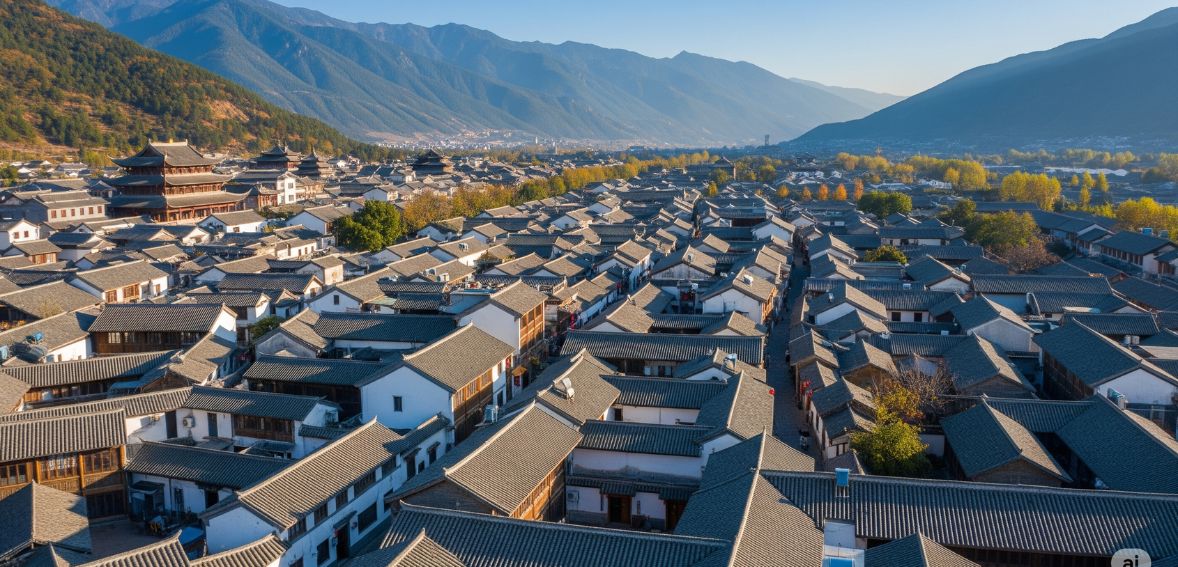
Dali Ancient Town
Official Link: For travel information on Dali, including the ancient town and Erhai Lake, the travel guide website Travel China Guide provides comprehensive details: https://www.travelchinaguide.com/cityguides/yunnan/dali/
Dali: Realm of the Bai Kingdom
History:
Dali’s history is inextricably linked to the powerful kingdoms that once ruled this fertile basin. From the 8th to the 10th centuries, it was the heart of the Nanzhao Kingdom, a formidable power that rivaled the Tang Dynasty in strength and influence. The Nanzhao kings were devout Buddhists, and their legacy can still be seen in the magnificent Three Pagodas of the Chongsheng Temple.
In 937, the Duan clan established the Dali Kingdom, which ruled for over 300 years until the Mongol invasion in 1253. The Dali Kingdom was a center of trade and Buddhism, and its influence extended throughout much of present-day Yunnan and neighboring regions. The legacy of this era is still palpable in the architecture, customs, and religious practices of the local Bai people, who are descendants of the citizens of these ancient kingdoms.
Maps:
A map of Dali Old Town and its surrounding attractions, including Erhai Lake and Cangshan Mountain, can be found here: https://www.topchinatravel.com/dali/dali-maps.htm
This map will help you understand the layout of the old town and plan your exploration of the beautiful lake and the majestic mountains that frame it.
Day 7-9: Lijiang – Echoes of the Tea Horse Road
A scenic bus ride of about three hours brought me from Dali to Lijiang, a UNESCO World Heritage site and a town that seems to be frozen in time. Lijiang’s Old Town, with its labyrinth of canals, cobblestone streets, and traditional Naxi architecture, is a place of undeniable charm.
I spent my first day in Lijiang simply getting lost in its maze-like alleys. I wandered past gurgling canals, crossed countless stone bridges, and marveled at the intricate woodwork of the Naxi houses. I climbed to the top of Lion Hill to get a panoramic view of the sea of tiled roofs, with the magnificent Jade Dragon Snow Mountain dominating the northern horizon. In the evening, I found a quiet teahouse by a canal, sipping on Pu-erh tea and watching the world go by.
The next day, I ventured out of the Old Town to explore its surroundings. A short bus ride took me to the Black Dragon Pool Park, a beautiful park with a stunning view of Jade Dragon Snow Mountain perfectly reflected in the clear waters of the pool – a picture-postcard moment. In the afternoon, I visited the Baisha Old Town, the original capital of the Naxi Kingdom. Baisha is much quieter and less commercialized than Lijiang, offering a glimpse into a more traditional way of life. I was particularly captivated by the Baisha Murals, ancient frescoes depicting a unique blend of Buddhist, Taoist, and Dongba beliefs.
My third day in the Lijiang region was the pinnacle of my trip, both literally and figuratively. I joined a day tour to the Jade Dragon Snow Mountain. A cable car whisked me up to an observation deck at an altitude of 4,506 meters, placing me amidst a breathtaking panorama of glaciers and snow-capped peaks. The air was thin, and the temperature was low, but the sheer grandeur of the landscape was more than enough to keep me warm. On the way back, we visited the Blue Moon Valley, a series of stunningly blue and turquoise lakes at the foot of the mountain, a truly ethereal sight.
Official Link: For information on Lijiang and Jade Dragon Snow Mountain, the Lijiang tourism board has an official site, though it may be in Chinese. A reliable English resource is the travel website, GoKunming: https://www.gokunming.com/en/listings/item/jade_dragon_snow_mountain/
Lijiang: Jewel of the Tea Horse Road
History:
The history of Lijiang is the history of the Naxi people and the legendary Tea Horse Road. This ancient network of caravan paths snaked through the Himalayas, connecting the tea-producing regions of Yunnan with Tibet and beyond. Lijiang, perfectly situated on this route, became a bustling center of commerce and cultural exchange.
The Old Town of Lijiang, a UNESCO World Heritage site, is a testament to this prosperous era. Its intricate network of canals, cobblestone streets, and unique Naxi architecture is a marvel of urban planning. The town was ruled by the powerful Mu family, whose palace, the Mu Palace, was the center of political and cultural life for centuries. The Naxi people have a unique Dongba culture and pictographic writing system, which adds to the rich historical tapestry of this enchanting town.
Approximate Costing of Visiting (as of 2025):
- Lijiang Old Town (Dayan):
- An Old Town Maintenance Fee of around 50 CNY is often required for entry into certain areas and attractions within the old town, such as the Mu Palace and a visit to the Black Dragon Pool. This fee is usually valid for several days.
- Jade Dragon Snow Mountain:
- Entrance Fee: Approximately 100 CNY per person.
- Glacier Park Cable Car (the highest): Around 140 CNY per person.
- Spruce Meadow Cable Car: Around 60 CNY per person.
- Yak Meadow Cable Car: Around 65 CNY per person.
- Shuttle bus within the park: Approximately 20 CNY per person.
- Tiger Leaping Gorge (from the Lijiang side):
- Entrance Fee: Approximately 45 – 65 CNY per person.
- The cost of trekking will include accommodation in guesthouses along the trail, which typically ranges from 50 – 150 CNY per night for a basic room.
Maps:
This will help you navigate the labyrinthine streets of the old town and understand the geographical relationship between the town and the majestic snow mountain that looms over it.
Day 10-11: Tiger Leaping Gorge – A Hike to Remember
For the next two days, I traded the comforts of ancient towns for the raw, untamed beauty of the Tiger Leaping Gorge, one of the deepest gorges in the world. A bus from Lijiang took me to the starting point of the high trail, a challenging but incredibly rewarding trek that winds its way along the side of the gorge.
The hike was strenuous, with steep ascents and narrow paths, but the views were simply out of this world. To my right, the Jade Dragon Snow Mountain soared into the sky, while to my left, the Haba Snow Mountain stood as a formidable guardian. Far below, the mighty Jinsha River, a tributary of the Yangtze, roared and churned its way through the narrow gorge.
I spent the night at a guesthouse perched on the mountainside, a simple but welcoming place with a terrace that offered a million-dollar view of the gorge. Waking up to the sight of the sun casting its first golden rays on the snow-capped peaks was a moment of pure magic.
The second day of the trek was less demanding, with more downhill sections. I passed by cascading waterfalls, bamboo groves, and small, isolated communities. The final descent to the Middle Tiger Leaping Gorge, where a massive rock sits in the middle of the raging river, was a powerful reminder of the raw force of nature. From there, I caught a bus to my next destination, the mythical land of Shangri-La.
Official Link: For information on trekking the Tiger Leaping Gorge, the website of Jane’s Guesthouse, a popular starting point for the trek, is a great resource: https://tigerleapinggorge.com/
Day 12-14: Shangri-La – Finding Paradise on the Plateau
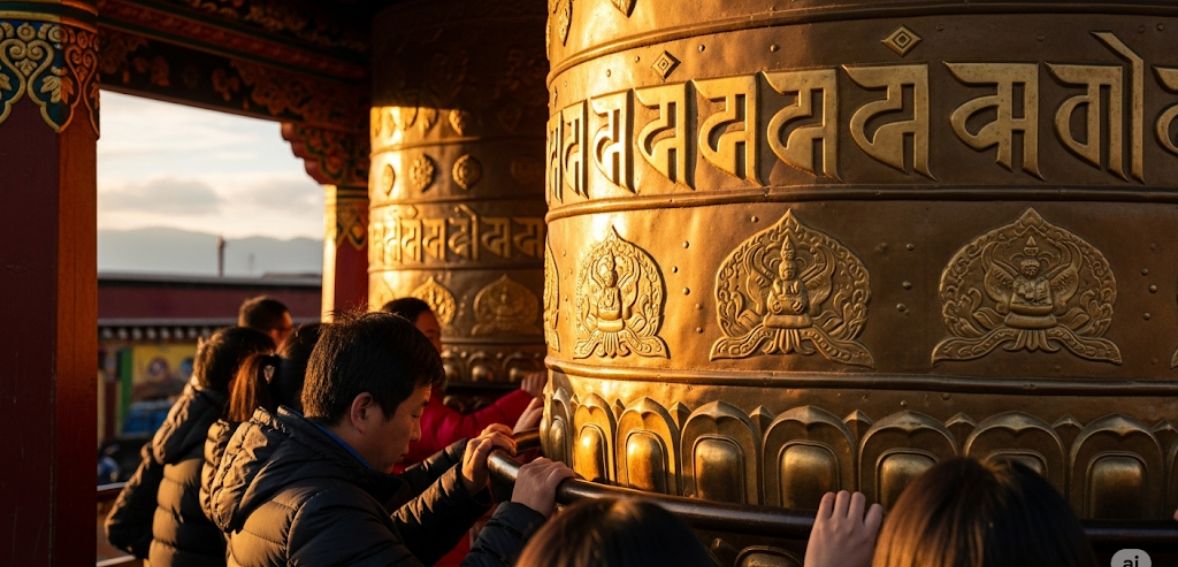
Arriving in Shangri-La, formerly known as Zhongdian, was like stepping into another world. At an altitude of over 3,200 meters, the air was thinner, the landscape was more rugged, and the Tibetan culture was palpable everywhere.
My first day in Shangri-La was spent exploring the Dukezong Ancient Town, a beautifully restored Tibetan town with a massive prayer wheel at its center. I joined the pilgrims in turning the giant wheel, a symbolic act of sending prayers to the heavens. In the evening, I gathered with locals in the town square for a traditional Tibetan circle dance, a joyous and infectious celebration of life.
The next day, I visited the magnificent Songzanlin Monastery, often referred to as the “Little Potala Palace” for its resemblance to the iconic landmark in Lhasa. This sprawling complex of golden-roofed temples and prayer halls is the largest Tibetan Buddhist monastery in Yunnan. I spent hours wandering through its halls, admiring the intricate thangkas, and observing the monks in their daily rituals. The atmosphere was one of profound peace and devotion.

For my final full day in Yunnan, I ventured to the Pudacuo National Park, a pristine alpine wonderland of lakes, forests, and meadows. I hiked along the wooden boardwalks that meander through the park, taking in the stunning scenery of Shudu Lake and Bita Lake, their crystal-clear waters reflecting the surrounding mountains and forests. I saw yaks grazing peacefully in the meadows and felt a deep sense of connection with nature in this untouched paradise.
Official Link: For information about Shangri-La and its attractions, the China Discovery travel website provides a comprehensive guide: https://www.chinadiscovery.com/yunnan/shangri-la.html
Shangri-La: A Glimpse of Paradise
History:
The history of what is now known as Shangri-La is deeply rooted in Tibetan culture. For centuries, this remote region, formerly called Zhongdian, was a vital stop on the Tea Horse Road and a significant center for Tibetan Buddhism. The magnificent Ganden Sumtseling Monastery (Songzanlin Monastery), founded in the 17th century by the Fifth Dalai Lama, stands as a powerful symbol of this enduring faith.
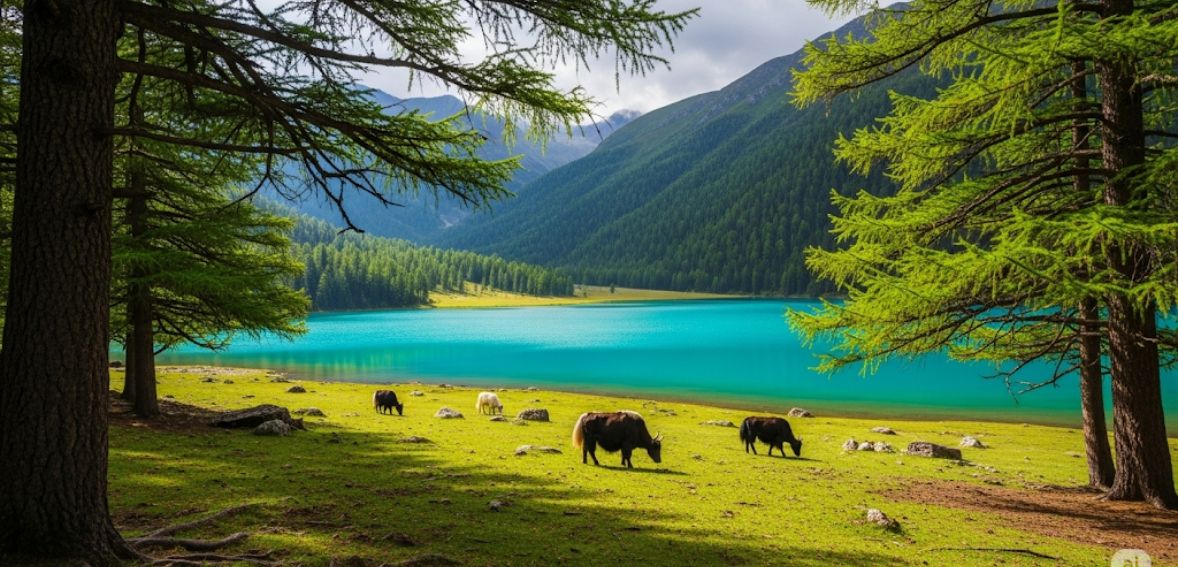
The name “Shangri-La” itself has a much more recent and literary origin. It was coined by the British author James Hilton in his 1933 novel, Lost Horizon, to describe a mythical, harmonious valley in the Himalayas. In 2001, in a bid to promote tourism, the Chinese government officially renamed Zhongdian to Shangri-La, believing that its stunning landscapes and rich Tibetan culture were a real-world embodiment of Hilton’s fictional paradise.
Approximate Costing of Visiting (as of 2025):
- Songzanlin Monastery:
- Entrance Fee: Approximately 115 CNY per person, which often includes a shuttle bus from the parking area to the monastery entrance.
- Pudacuo National Park:
- Entrance Fee: Approximately 138 CNY per person, which typically includes the park’s eco-friendly shuttle bus service.
- Dukezong Ancient Town:
- Free admission. You can freely explore the town and see the giant prayer wheel.
Maps:
This map will help you orient yourself in the high-altitude town of Shangri-La and plan your visit to the expansive and beautiful national park.
By understanding the rich history, planning for the associated costs, and familiarizing yourself with the geography of these incredible destinations, you can transform your journey through Yunnan from a simple vacation into a deeply enriching and unforgettable exploration of one of China’s most captivating provinces.
Day 15: Farewell, Yunnan
My 15-day journey through Yunnan had come to an end. As I boarded my flight from Diqing Shangri-La Airport (DIG), my heart was full of gratitude for the incredible experiences I had had. From the gentle charm of Kunming to the majestic beauty of Shangri-La, Yunnan had captivated me in every way imaginable.
This journey was more than just a vacation; it was a pilgrimage to a land of stunning natural beauty, rich cultural heritage, and warm, welcoming people. It was a reminder of the simple joys of life – a quiet cup of tea, a breathtaking view, a shared smile with a stranger. The memories of my 15 days in Yunnan will stay with me forever, a whisper of the clouds that I will carry in my heart until I can return to this enchanting corner of the world.
Approximate Costing of Visiting (as of 2025):
- Dali Old Town:
- Free admission. There might be a small maintenance fee collected at certain times, but generally, it is free to enter and wander.
- Erhai Lake:
- Cycling around the lake is free. Bicycle or e-bike rentals range from 30 – 100 CNY per day.
- Boat trips on the lake can vary significantly. A spot on a larger tourist boat might cost around 150 CNY per person, while chartering a smaller private boat will be more expensive.
- Cangshan Mountain:
- Entrance Fee: Approximately 40 CNY per person.
- Cable Cars: There are several cable car routes with varying prices. The Gantong cableway is around 80 CNY for a round trip, while the longer Ximatan cableway can cost up to 340 CNY for a round trip.
- Three Pagodas of Chongsheng Temple:
- Entrance Fee: Approximately 120 CNY per person.


